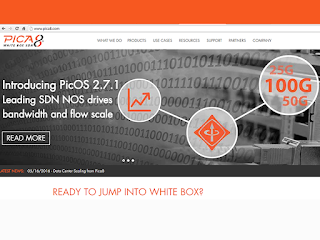Cisco has prevailed in a long-running patent dispute with Arista (the '944 case).
On Thursday, the International Trade Commission issued a Final Determination that Arista’s products infringe three Cisco patents. Two of the patents cover Cisco’s private VLAN network security technology which Arista included in its switches. The third covers Cisco’s proprietary core SysDB technology.
Additional court ruling are expected in the coming months for a different group of patents covered by a second ITC investigation (the ‘945 Investigation). A further trial covering patent and copyright infringement is expected in November.
In a blog post, Mark Chandler, General Counsel at Cisco, writes the ITC remedies include an exclusion order, which would ban all Arista switches and their components from importation into the U.S., and a cease and desist order blocking them from building infringing products in the US that are comprised of any imported components.
Arista has as much as acknowledged the infringement of the Private VLAN patents, announcing that they will discontinue the private VLAN feature “for now,” belying their claim that they had developed workarounds. The remedies also include a cease and desist order prohibiting the marketing, sale, and distribution of infringing Arista switches in the U.S. These orders are scheduled to go into effect at the end of the Presidential Review Period on August 23, 2016. Arista made much of the fact that it had challenged the validity of Cisco’s patents. Arista did not challenge the validity of the Private VLAN patents, however, and the Patent and Trademark Office declined to institute review proceedings on six claims in the SysDB patent which the ITC found infringed.
 For its part, Arista noted that the ITC ruled in its favor with respect to two of the five patents under investigation (U.S. Patent Nos. 7,290,164 and 7,340,597), finding that two accused Arista features do not infringe the asserted claims. Arista previously announced that it has released a new version of its EOS software containing design-arounds that it believes address the ITC’s findings with respect to the features implicated in the Final Determination. Arista said it intends to seek appropriate regulatory approvals for these design-arounds.
For its part, Arista noted that the ITC ruled in its favor with respect to two of the five patents under investigation (U.S. Patent Nos. 7,290,164 and 7,340,597), finding that two accused Arista features do not infringe the asserted claims. Arista previously announced that it has released a new version of its EOS software containing design-arounds that it believes address the ITC’s findings with respect to the features implicated in the Final Determination. Arista said it intends to seek appropriate regulatory approvals for these design-arounds.
http://blogs.cisco.com/news/final-itc-determination
http://investors.arista.com/company/investors-relations/press-releases/press-release-details/2016/ITC-Issues-Final-Determination-in-944-Investigation/default.aspx
On Thursday, the International Trade Commission issued a Final Determination that Arista’s products infringe three Cisco patents. Two of the patents cover Cisco’s private VLAN network security technology which Arista included in its switches. The third covers Cisco’s proprietary core SysDB technology.
Additional court ruling are expected in the coming months for a different group of patents covered by a second ITC investigation (the ‘945 Investigation). A further trial covering patent and copyright infringement is expected in November.
In a blog post, Mark Chandler, General Counsel at Cisco, writes the ITC remedies include an exclusion order, which would ban all Arista switches and their components from importation into the U.S., and a cease and desist order blocking them from building infringing products in the US that are comprised of any imported components.
Arista has as much as acknowledged the infringement of the Private VLAN patents, announcing that they will discontinue the private VLAN feature “for now,” belying their claim that they had developed workarounds. The remedies also include a cease and desist order prohibiting the marketing, sale, and distribution of infringing Arista switches in the U.S. These orders are scheduled to go into effect at the end of the Presidential Review Period on August 23, 2016. Arista made much of the fact that it had challenged the validity of Cisco’s patents. Arista did not challenge the validity of the Private VLAN patents, however, and the Patent and Trademark Office declined to institute review proceedings on six claims in the SysDB patent which the ITC found infringed.
 For its part, Arista noted that the ITC ruled in its favor with respect to two of the five patents under investigation (U.S. Patent Nos. 7,290,164 and 7,340,597), finding that two accused Arista features do not infringe the asserted claims. Arista previously announced that it has released a new version of its EOS software containing design-arounds that it believes address the ITC’s findings with respect to the features implicated in the Final Determination. Arista said it intends to seek appropriate regulatory approvals for these design-arounds.
For its part, Arista noted that the ITC ruled in its favor with respect to two of the five patents under investigation (U.S. Patent Nos. 7,290,164 and 7,340,597), finding that two accused Arista features do not infringe the asserted claims. Arista previously announced that it has released a new version of its EOS software containing design-arounds that it believes address the ITC’s findings with respect to the features implicated in the Final Determination. Arista said it intends to seek appropriate regulatory approvals for these design-arounds.http://blogs.cisco.com/news/final-itc-determination
http://investors.arista.com/company/investors-relations/press-releases/press-release-details/2016/ITC-Issues-Final-Determination-in-944-Investigation/default.aspx













